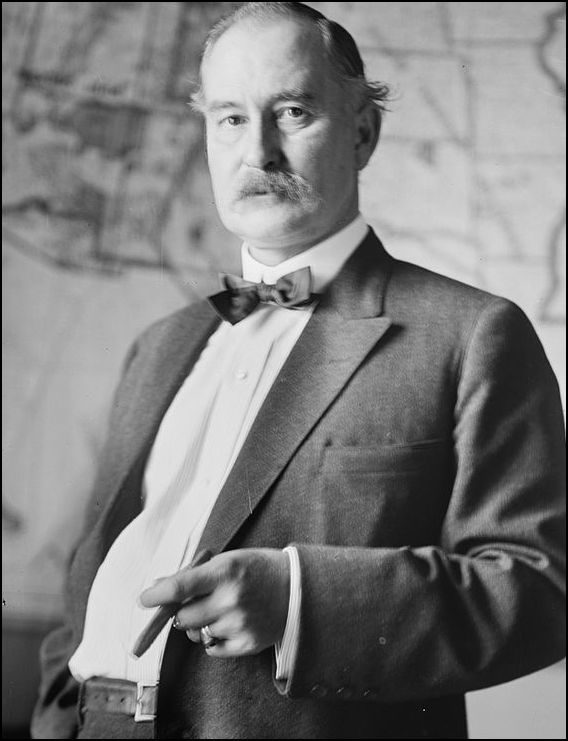Before Watergate, There Was the Teapot Dome Scandal
"In this job I am not worried about my enemies," President Warren G. Harding once famously quipped. "It is my friends that keep me awake at nights." He wasn't joking.
Even though it lasted only from 1921 to 1923, Harding's administration became the most scandal-ridden to date, thanks to several of his old political pals. Attorney General Harry Daugherty was accused of profiting from the sale of government alcohol supplies during Prohibition, as well as selling pardons. Harding's head of the Veterans Bureau, Charles Forbes, was sentenced to two years in prison for bribery and corruption. Other scandals involved appointees in the Shipping Bureau and Alien Property Custodians office. And, 85 years ago this week, Harding's Secretary of the Interior, Albert B. Fall, announced his resignation in the midst of an unfolding scandal that would become known as Teapot Dome.

Before he entered politics, Fall had practiced law in the New Mexico Territory, making a name for himself with his successful defense of Pat Garrett, the lawman who had killed Billy the Kid. Fall certainly looked the part of a Western lawyer, with an ever-present broad-brimmed hat, a bushy mustache, and a cigar clenched in his teeth. His charming drawl and go-getting manner made him many friends in business and politics.
His popularity earned him a seat on the U.S. Senate in 1912 after New Mexico became a state. He became friends with Senator Harding of Ohio, and became part of the the Ohio Gang. After elected President in 1920, Harding appointed Fall his Secretary of the Interior.
Fall immediately tried to wrest control of the Forest Service from the Department of Agriculture. He had designs on the natural resources of the Alaska Territory, but was no match for the powerful Agriculture Secretary--and future Vice President--Henry Wallace. Fall did achieve success in another arena, however, convincing Harding to transfer several U.S. Navy oil reserves from the Navy to the Interior Department in May 1921.
American oil companies had long coveted these rich oil reserves, which included Elk Hills in California and Teapot Dome, near Casper, Wyoming, so named for a teapot-shaped boulder nearby. Without opening the process for competitive bidding, Fall arranged leases with two multimillionaire oil men, Harry Sinclair and Edward Doheny.
While outraging many, including conservationists, competing oil companies, and Navy officers, the leases appeared legal. Nonetheless, executives of several oil companies complained to Congress. In April 1922, Sen. Robert M. La Follette, Sr., a Progressive from Wisconsin, arranged for a Senate committee to look into the contracts.
When Fall first took the job as Interior Secretary, his personal financial situation was precarious: although he owned a dilapidated New Mexico ranch, he owed many debts as well as taxes going back to 1912. After the oil leases were signed, he abruptly paid off all his obligations. He also bought additional parcels of land for his ranch costing more than $120,000. His sudden reversal of fortune, attained while drawing a government salary of $12,000, soon aroused suspicion. Senate investigators, including Thomas J. Walsh of Montana, took a hard look at his finances. Fall resigned in early 1923 and accepted a job from Harry Sinclair. President Harding seemed unconcerned about the allegations against Fall; he even considered him for a post on the U.S. Supreme Court. The full extent of Falls corruption would come to light only after Harding's death in August 1923.
Investigators discovered that Sinclair and Doheny had bribed Fall with cash and large no-interest personal loans totaling approximately $404,000, or nearly $5 million in today's dollars. After the U.S. Supreme Court ruled in 1927 that the leases had been illegally obtained, they were canceled and control of the reserves reverted to the Navy. While Sinclair and Doheny escaped conviction on criminal charges arising from the Teapot Dome Scandal, the former served six months in prison for contempt of court. At one point, Doheny approached the director Cecil B. DeMille about making a movie presenting Doheny's side of the story. DeMille liked the idea, but the film was never made.
In 1929, Fall earned notoriety as the first former Cabinet officer ever convicted of a felony committed while in office. He was fined $100,000, which he never paid, and served just over nine months of a one-year prison sentence. "My version of the matter is simply that I was not guilty," he told the parole board. He died in 1944 at the age of 83, never have admitted his guilt. Until Watergate, Teapot Dome was the most infamous scandal involving a presidential administration.
Curiously, Teapot Dome inspired a young Richard M. Nixon. "Mother, I would like to become a lawyer," he recalled saying at the height of the scandal. "An honest lawyer, who can't be bought by crooks." In 1974, five men would break into the Democratic National Committee office in Washington, D.C. The resulting scandal led to the resignation of a President. And that's what it took to make Teapot Dome seem quaint.
